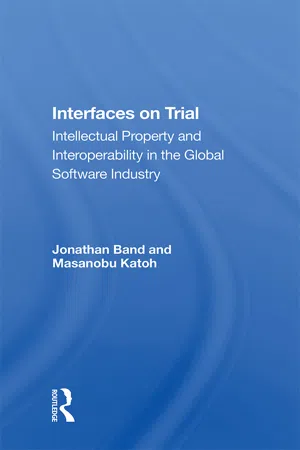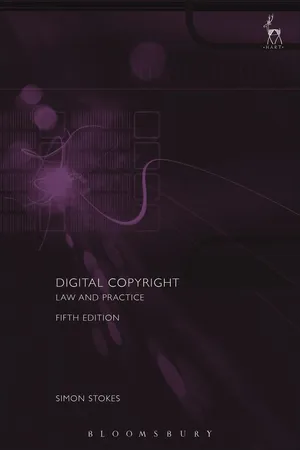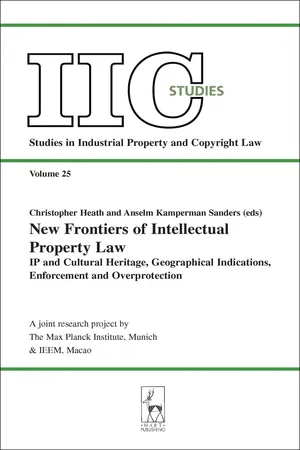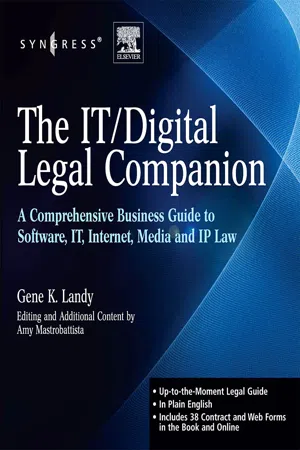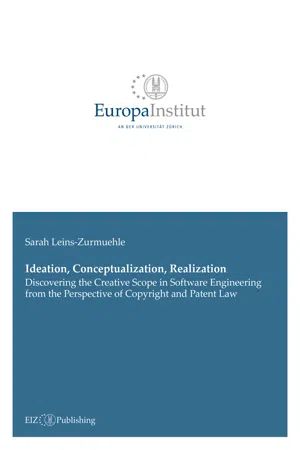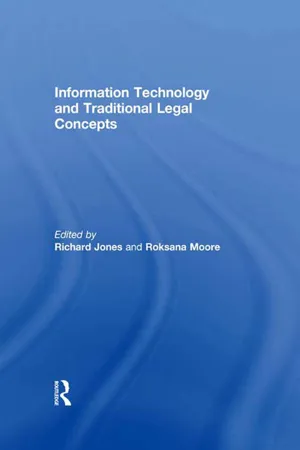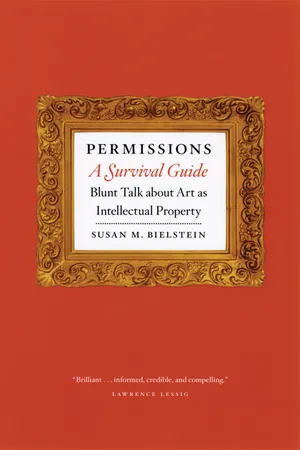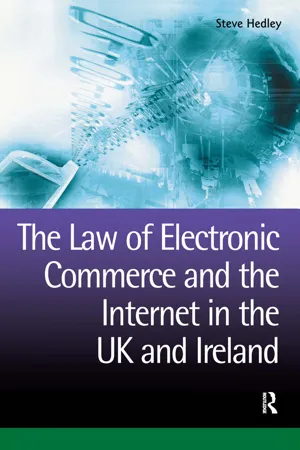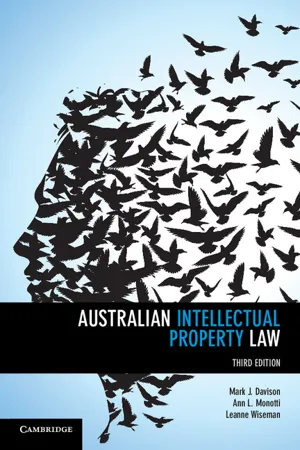Computer Science
Computer program copyright
Computer program copyright refers to the legal protection of the original expression of a computer program. It grants the creator exclusive rights to reproduce, distribute, and modify the program. This protection encourages innovation and creativity in software development by providing a means for developers to protect their work from unauthorized use or reproduction.
Written by Perlego with AI-assistance
Related key terms
1 of 5
12 Key excerpts on "Computer program copyright"
- eBook - ePub
Interfaces On Trial
Intellectual Property And Interoperability In The Global Software Industry
- Jonathan Band(Author)
- 2019(Publication Date)
- Routledge(Publisher)
87 Similarly, CONTU underscored:Copyright protection for programs does not threaten to block the use of ideas or program language previously developed by others when that use is necessary to achieve a certain result. When other language is available, programmers are free to read copyrighted programs and use the ideas embodied in them for preparing their own works. This practice, of course, is impossible under a patent system, where the process itself is protected ....88CONTU found that copyright subsisted in flow charts, source code, and object code. It opined that "[m]ost infringements, at least in the immediate future, are likely to involve simple copying."89 CONTU did, however, acknowledge that the industry still was in its infancy, and that "the new applications which advancing technology will supply may make drawing the line of demarcation" between "the copyrightable form of the program and the uncopyrightable process which it implements" more difficult in the future.90CONTU believed that "[relatively few changes in the Copyright Act of 1976 are required" in order to properly extend its coverage to computer programs.91 CONTU first recommended that the definition section of the Copyright Act, 17 U.S.C. § 101, be amended to include a definition of computer programs. CONTU next recommended the addition of a section limiting the exclusive rights of owners of copyrights in computer programs. CONTU recognized that the simple act of loading a program into computer memory involved the making of a copy. CONTU further recognized that "[b]ecause of a lack of complete standardization among programming languages and hardware in the computer industry," users often had to adapt a program to make it function properly on their computers.92 Accordingly, CONTU suggested that this new section permit (1) the making of a copy or adaptation when it "is created as an essential step in the utilization of the computer program;"93 - eBook - ePub
Digital Copyright
Law and Practice
- Simon Stokes(Author)
- 2019(Publication Date)
- Hart Publishing(Publisher)
6 Software Copyright 6.1. Code and Copyright: The Basics 1 Computer programs or software, as they are generally known, are in one sense simply instructions to operate a machine in machine-readable electronic form (binary code (010101 etc)) or in a higher level programming language. Software may be distributed: (a) embodied on a physical carrier such as a disk or CD, in which case it is probably ‘goods’ under UK Sale of Goods law 2 (and will be so in the context of EU exhaustion of rights principles – see chapter five); or (b) electronically (eg web downloads), in which case it is not ‘goods’ but probably services. Software is typically written in a high level language (eg FORTRAN or later languages), which a programmer will understand – this is source code. This will need to be compiled (ie translated) into machine-readable code (object code) for distribution on CD, disk or electronically to users. Software may be protected by a variety of contractual and intellectual property (IP) rights in the UK, principally: (a) Copyright: computer programs (object code) and their preparatory design materials (source code, etc) are defined as literary works under section 3, Copyright, Designs and Patents Act 1988 (CDPA)). User manuals and software licences in printed or electronic form will also be protected by copyright and possibly database right in certain cases - eBook - PDF
New Frontiers of Intellectual Property Law
IP and Cultural Heritage - Geographical Indications - Enforcement - Overprotection
- Christopher Heath, Anselm Kamperman Sanders, Christopher Heath, Anselm Kamperman Sanders(Authors)
- 2005(Publication Date)
- Hart Publishing(Publisher)
In reality, the first mover in this direction was the United States who on 12 December 1980 adopted the “Computer Software Amendment Act”. In 1991 15 the European Community adopted Directive 91/250 on the protec-tion of computer programs. The Directive was adopted on the basis of the recognition of investments related to software and the significant risk of illicit copying made by third parties 16 and for the purpose of eliminating the dif-ferences among the member states on the juridical protection of computer programs. 17 The Directive expressly declared that the choice to use copyright for the legal protection of software should be considered merely a first step. 18 Accordingly, the Directive limits the protection conferred on computer programs (including preparatory materials) “per se”, expressly excluding the ideas and the principles on the basis of the said computer programs. 19 Subsequently, the TRIPs Agreement of 1994 in Art. 10 stated that “Computer Programs, whether in source or in object code, shall be protected as literary works under the Berne Convention (1971)”. By following this approach we could easily come to the conclusion that computer programs “per se” are internationally protected by the copyright system. The practical enforcement of said discipline is relevant mainly in cases of piracy, that is cases of illicit duplication of software. Very few cases exist in which there was a real judicial discussion of the full or partial dupli-cation of the source code of a program, independently of the duplication of all the software (possibly having a different users interface). In general, the very limited scope of protection of the copyright was affirmed. 20 Software and Computer-Related Inventions 165 13 In certain cases also identical (or quasi-identical) creations should be tolerated, in the case of ascertained independent creation from two different authors. - eBook - ePub
The IT / Digital Legal Companion
A Comprehensive Business Guide to Software, IT, Internet, Media and IP Law
- Gene K. Landy, Amy J. Mastrobattista(Authors)
- 2008(Publication Date)
- Syngress(Publisher)
In a novel every element of a work relevant to copyright is in black and white: the words, phrases, plot, and characters—everything can be found on the printed page. With software, the images and words that the user.sees on the screen are only one small element of the program. Indeed many programs have no visible aspect and operate only in the background or in a device. Any visible (or audible) elements of a program are merely an output of the binary code of the program, which consists of the on–off signals that the machine perceives and executes.Binary code that runs in a computer is quite different from the source code that the author wrote and used to generate the object code.All these elements are conceptually different from the internal organization and structure of the program.What is it then about software that the Copyright Act protects from copying? What copying is deemed infringing? We know that infringement is making or selling unauthorized copies. But what is included in copying software? Is it copying pictures and words on the screen, object code, source code, internal structure, overall appearance, or something else? Are the programming concepts protected? Is reverse engineering also infringement?In the course of decisions rendered over the last two decades, the courts have had to sort out which of the many elements and aspects of software are protected by the Copyright Act. We now have many answers. In the next several sections, you will learn some of the limits of copyright protection for software.Unauthorized Copying of Copyrighted Computer Code
One aspect of the law is crystal clear. It is almost always an infringement to copy binary code or source code without permission for the purposes of commercial use or sale. Similar protection against copying applies to the text of the user documentation that comes in the program, in printed form, on CD-ROM or is available online.Note: There is a narrow exception to this rule against literal copying. Under the Copyright Act, the software licensee has the right to make one copy of the program for archival purposes only. - eBook - ePub
Ideation, Conceptualization, Realization
Discovering the Creative Scope in Software Engineering from the Perspective of Copyright and Patent Law
- Sarah Leins-Zurmuehle(Author)
- 2021(Publication Date)
- buch & netz(Publisher)
[305] It is person-centred. While the point of reference in patent law is closely connected to the invention and its first full disclosure, in copyright the point of reference does not consider in any way the work’s date of creation or release.The interviewees stated that tying the expiration date of an intellectual property right to the developer or engineer ad personam would not be reasonable where created goods showed more economic or technical relevance than artistic. Most of the software companies therefore believed that the end of the protection term of a computer product should be tied to the computer program itself.[306]This argument is supported by the fact that nowadays most computer programs are developed in corporate structures, mostly by a team of representatives of different departments.[307] Individual and independent software engineers publishing software are still common but seem to be the minority case. This same understanding has been incorporated into the software copyright law of most countries, usually assigning the rights to computer programs directly to the employer of a software developer instead of the author.[308] The product and its development remain the key element in focus. However, in today’s practice software is constantly being added, altered or deleted, and the subject matter of protection is hence continuously being changed. Consequently, to reconcile the term of protection against the specific object of protection, connecting the term of protection to the author would entail that a company would need to record for each (part of a) software project those participated in its development and when the last co-author died in order to determine the term of protection for the specific subject matter still in place at the time. If the individual contributions could be separated, even the individual work parts (e.g. components) would have to be attributed. According to the feedback of the software companies, this is nearly impossible.[309] - eBook - PDF
- Frank Bott, Allison Coleman, Allison Coleman, Diane Rowland(Authors)
- 2000(Publication Date)
- CRC Press(Publisher)
Computer programs Computer programs and compilations of computer programs are protected as literary works. IBCOS Computers Ltd v Barclays Bank Highland Finance L td [1994] FSR 275, 289 (see further below), concerned an ADS program which was made up of a composite of interrelated programs, routines and subroutines. There were 335 programs, 171 record layout files and 46 screen layout files. Each of these was protected by copyright, but so too was the overall package 7. See Copyright and Rights in Databases Regulations 1997. 152 Professional issues in software engineering as a compilation; and a compilation is itself a literary work for the purposes of copyright. There is no definition of a computer program in the 1988 Act, it being thought inappropriate to fix a definition to today’s technology which might become obsolete in a very short time. The definition of a literary work was changed by the 1992 Regulations to include preparatory design material for a computer program. This was probably unnecessary, as most preparatory material would have been protected anyway. However, the 1992 amendment takes the issue beyond doubt and ensures that the program is protected from the earliest possible moment. There is no definition of preparatory material, but it should cover flow charts expressing the algorithm or other schematic representation of the logic of the program8. Other copyright works can be found in a computing product. There might be artwork on the packaging, drawings in the preparatory materials, graphics and photographs used to produce screen images. These are artistic works. The layout of the printed page in the manual could be a typographical arrangement. There might also be music (a musical work), lyrics (a literary work), a sound recording and a film (or video); and all or any of these works can be expected in a multimedia package. - eBook - ePub
Intellectual Property Overlaps
Theory, Strategies, and Solutions
- Robert Tomkowicz(Author)
- 2013(Publication Date)
- Routledge(Publisher)
4 Copyright law
The Copyright Act is usually presented as a balance between promoting the public interest in the encouragement and dissemination of works of the arts and intellect and obtaining a just reward for the creator.(Justice William Binnie, Supreme Court of Canada521 )[I]n order to protect the essential balance which lies at the heart of copyright law, care must be taken to ensure that copyright protection is not allowed to extend beyond the legitimate interests of a copyright holder.(Justice Michel Bastarache, Supreme Court of Canada522 )Copyright law is the segment of the intellectual property system most predisposed to overlaps with other segments. Two factors lead to this conclusion. First, unlike most of the other intellectual property rights, copyrights arise automatically without any formalities once a copyrightable work is created and fixed in a tangible medium. Consequently, when a new technology with hybrid characteristics or new means for expressing traditional subject matter is developed, it may automatically fall under the protection of copyright law in addition to other intellectual property rights, whether or not its owner is interested in acquiring this protection. Copyright also has a longer duration than most other intellectual property rights, which encourages subsequent use of overlapping copyrights when the other intellectual property monopoly expires. And second, since the inclusion of computer programs in the definition of literary works in copyright law, this segment of the intellectual property system has expanded its protective umbrella into many forms of technology. This evolution is ongoing and slowly turns copyrights into a scheme that controls access to many technologically advanced products. In this context, the purpose of copyright law is being replaced with purposes normally associated with patent law. - Richard Jones, Roksana Moore(Authors)
- 2013(Publication Date)
- Routledge(Publisher)
Copyright, contract and the protection of computer programs Ruth Dawn Atkins Department of Law & Criminology, Aberystwyth University, UKThe extent to which permitted acts under copyright law can be varied by contractual arrangement and conversely, the manner in which proprietary interests can override contrary stipulations expressed in a contractual agreement, collectively display something of the complexity facing software creators and acquirers when defining the scope of their rights and responsibilities towards each other. This paper explores the true scope of the rights granted to software users under existing legislation and considers the measures which a software creator may legitimately advance in order to vary that position. In so doing it is suggested how possible tensions between copyright and contract principles can be resolved and how a successful and suitably transparent agreement between the parties can be promoted.Introduction
In light of decisions such as Navitaire v. Easyjet Airline and Nova Productions v. Mazooma Games ,1 the boundaries between protected expression and unprotected ideas and therefore the extent of copyright protection for computer programs has been more clearly defined. These cases reinforce the view that software houses may find it difficult to succeed in a copyright action against another for writing a computer program that emulates or imitates, by having the same ‘look and feel’ as an existing program, if this involves no copying of the program code.2 Additional or alternative means of protection could be derived from other branches of intellectual property law such as the laws relating to designs, trade marks, passing off and the law of confidence and each are worthy of consideration. However, this paper considers what contribution the law of contract can make towards protecting the interests of a software supplier, given that the scope of the parties’ obligations and the extent to which these may be prescribed and varied by contractual arrangement can impact upon the level of protection derived for proprietary interests. Therefore, as we continue to see the ‘Law Shaping Technology; Technology Shaping the Law’,3- eBook - PDF
Permissions, A Survival Guide
Blunt Talk about Art as Intellectual Property
- Susan M. Bielstein(Author)
- 2010(Publication Date)
- University of Chicago Press(Publisher)
intellectual property law is dominated by the concept of copyright. What is copyright exactly, and who invented it? Copyright is the exclusive, legal right to publish, reproduce, and sell a literary, artistic, dramatic, or musical work. It is designed pri-marily to protect an author or artist q against any unauthorized copy-ing of her works r for a reasonable period of time . A copyright can be broken down into a cluster of subrights, each of which can be sold or retained at the owner’s discretion. For ex-ample, a writer or her agent may license one publisher to issue her book in English and another one to publish it in French. A sculptor may allow an art historian to reproduce one of his pieces in a book or a film director to use it in a movie. Copyright does not cover ideas, only their expression. And the ex-pression must be fixed in a tangible medium. y For example, just be-cause Salvador Dalí dreamed of melting clocks one night, doesn’t 4 * W hat Is Copyright? 1. Because this book is geared toward the visual arts, I frequently refer to the author as “the artist.” 2. Consciously or unconsciously, copyright laws are always tailored to the most up-to-date technologies of mass reproduction; thus, the earliest laws were geared toward books and writing. When new inventions made it feasible to copy pictorial, musical, and graphic works, the law naturally expanded to encompass those media. And today, in the early twenty-first century, we must take into account computer programs, digital technologies, and other kinds of new media too. 3. Thus, skywriting, which is ephemeral, cannot be copyrighted. 13 W hat Is Copyright? mean he holds a monopoly on the idea. - eBook - ePub
- A. Mitchell Polinsky, Steven Shavell(Authors)
- 2007(Publication Date)
- North Holland(Publisher)
In the case of most copyrighted works, the knowledge contained in the work may be comprehended from direct inspection. Therefore, the publication of a work discloses and disseminates. Furthermore, the Copyright Act requires those who register a work, which is optional, to deposit a copy with the Library of Congress.Some copyrighted works, however, do not lend themselves to visual inspection and comprehension. Piano rolls, for example are not human readable, although even that technology can be deciphered by the trained ear or a mechanical translation system. Musical or audiovisual works stored on magnetic tape and digital media can also be perceived directly. Computer software, however, cannot typically be perceived unless it is available in source code. Copyright Office regulations, however, do not require disclosure of the entirety of source code in order to secure copyright registration. Thus, as with patent law, copyright law allows protection of software without providing access to the underlying knowledge. As a result, follow-on invention is stifled, although such rules may deter infringement that would otherwise be difficult to detect.1.3.2.4 Rights of others (and defenses)
Several doctrines provide safety valves, beyond the limitations embodied in scope of protection, for promoting cumulative innovation. These include the experimental use doctrine (patent law), the fair use doctrine (copyright law), and the reverse engineering doctrines (of trade secret and copyright law). In addition, copyright law provides for several exemptions for educational and related purposes which can be viewed as promoting basic education for new authors and artists.Experimental use.
A subsequent inventor who wants to improve a patented technology may benefit from experimenting with it. U.S. patent law has had a common law exemption for “philosophical experiments” and research to ascertain “the sufficiency of [a] machine to produce its described effects” [Whittemore v. Cutter, 29 F. Cas. 1120 (C.C.D. Mass. 1813) ].4 Subsequent cases, however, have declared the defense to be “truly narrow” and applicable solely to activities “for amusement, to satisfy idle curiosity, or for strictly philosophical inquiry,” [Roche Prods., Inc. v. Bolar Pharm. Co., 733 F.2d 858, 863 (Fed. Cir. 1984) ;Madey v. Duke Univ., 307 F.3d 1351 (2002), cert. denied - Steve Hedley(Author)
- 2017(Publication Date)
- Routledge-Cavendish(Publisher)
Should we speak and write of 'ownership' of data? This is itself a controversial question. Legal protection of data and ideas is routinely referred to as the 'law of intellectual property', and use of that label is not seen as tying its user to any particular ideological conception of the area. And the fact (or supposed fact) that the area is becoming more property-like is often noted, whether with approbation or disapprobation. Much of this is simply a way of noting that the doctrines are increasing in scope and in severity of enforcement. But it also refers to disagreements over the rationale of the various doctrines, and whether that rationale is the same as the rationale for recognising private property. Some of the issues are introduced in the concluding section of this chapter. At this stage, it is enough to note that 'property' itself has uncertain boundaries, attracts controversies by the score, and is justified by a variety of vague theories, not all of which are compatible with one another. Therefore, argument over whether 'intellectual property' is properly so called is not very important unless (as is often the case) it is a code for discussing other, more fundamental issues as the nature of the rights at issue. From a classificatory point of view, the law of intellectual property is not very orderly, and its boundaries are unclear. Traditional doctrines such as 'copyright' and 'patent', which have in their time served a variety of purposes, have been patched up or added to as circumstances seem to require. And new doctrines have been introduced, some of great specificity (such as the legal protection of computer chip designs). The result is something of a jumble.This chapter and the next briefly review the various ways in which the law will act to protect data. While the line is not always clear, this chapter focuses on the rights with the more straightforward economic justification, which reward those who invest resources to produce or discover useful aggregations of information, and can reasonably expect the law to protect that investment and its value in the market place. The following chapter considers rights which cut across this, demanding that data which may have been gathered at some cost is nonetheless not employed purely for the collector's own purposes, but is used to serve other interests.Copyright
Copyright is probably still the most important of intellectual property doctrines. Despite its age, it is purely a creature of statute. As the name suggests, its original concern was with the making of copies of published books: the owner of the copyright had the exclusive right to produce copies, a right which could be exercised either in person, or by giving or selling permission ('licence') to others to do so. However, the right is considerably more extensive in its modern form: it is by no means confined to books, and it covers many uses for the copyrighted materials beyond simply copying them.- eBook - PDF
- Mark Davison, Ann Monotti, Leanne Wiseman(Authors)
- 2015(Publication Date)
- Cambridge University Press(Publisher)
1 Work is the term that is used to describe subject matter protected under pt III of the Copyright Act 1968 (Cth) – namely, literary, dramatic, artistic and musical works. See B. Sherman, ‘What is a copyright work?’ (2011) 12 Theoretical Inquiries in Law 99. 192 AUSTRALIAN INTELLECTUAL PROPERTY LAW 2 On assignment see ch 8. The artist, however, would have moral rights in the work. See ch 9 on moral rights. 3 See, for example, the distinction drawn by Dixon J in Victoria Park Racing and Recreation Grounds Co Ltd v Taylor (1937) 58 CLR 479, 498, 509 where he pointed out that the law does not necessarily protect any form of effort, enterprise, organisation or labour that may result in something of value for which others are prepared to pay. In order to be protected by copyright, a work must be original, recorded in material form and connected to Australia. Copyright initially vests in the author of the work (‘author’ is the term used to refer to the creator, whether of books, computer programs, or paintings). There are certain situations, how- ever, where copyright will vest in someone other than the creator, such as an employer or a person who commissions the creation of a work. Copyright gives the author (or owner) the right to exploit their works in a range of different circumstances. These include the ability to copy (or reproduce) the work, to publish the work, to perform the work in public, to communicate the work to the public, to make an adaptation of the work and to authorise someone else to carry out any of these activities. Copyright provides the owner with the right to prevent copying of their works. In essence if there is no copying, there is no infringement.
Index pages curate the most relevant extracts from our library of academic textbooks. They’ve been created using an in-house natural language model (NLM), each adding context and meaning to key research topics.
